A well-designed garden path does more than simply provide a route from one point to another; it guides the eye, defines spaces, and adds immense character to your outdoor sanctuary. Whether you envision a rustic, meandering trail or a sleek, contemporary walkway, the materials and design you choose can transform the entire look and feel of your landscape. Exploring various ideas allows you to find the perfect path that not only complements your home's architecture and garden style but also creates a journey through your personal green space, inviting exploration and admiration at every turn.
1. Classic Gravel Garden Path
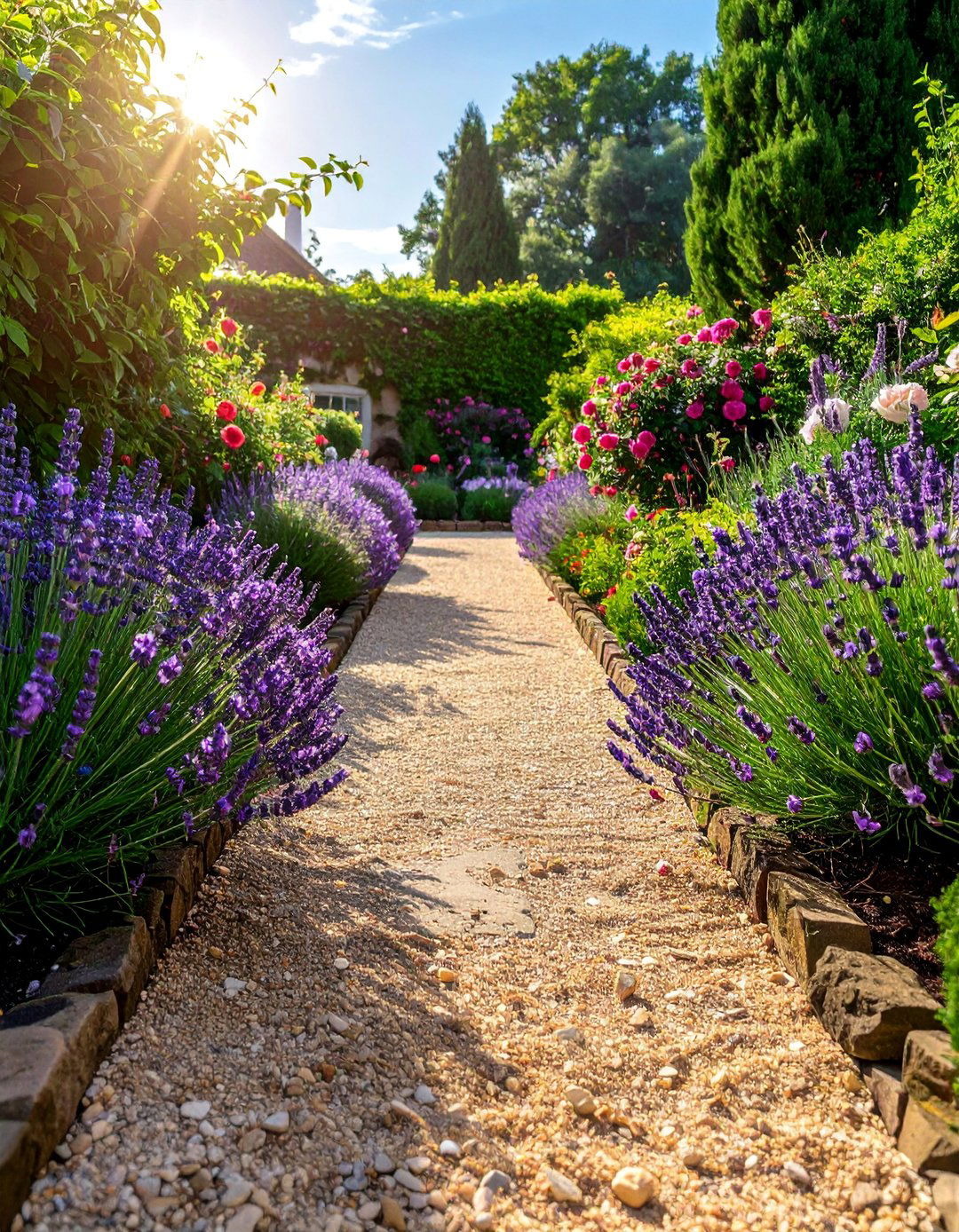
For a timeless and budget-friendly option, a classic gravel garden path offers both auditory and visual appeal. The gentle crunch underfoot creates a sensory experience, while the neutral tones of the stone complement a wide variety of planting schemes, from lush English cottages to minimalist modern designs. Proper installation is key to prevent weed growth and gravel migration; this involves excavating the area, laying a durable landscape fabric, and adding a sturdy border made of metal, stone, or brick. This approach ensures a low-maintenance, attractive walkway that elegantly winds through your flowers and foliage, providing a durable surface for years of enjoyment.
2. Irregular Flagstone Garden Path
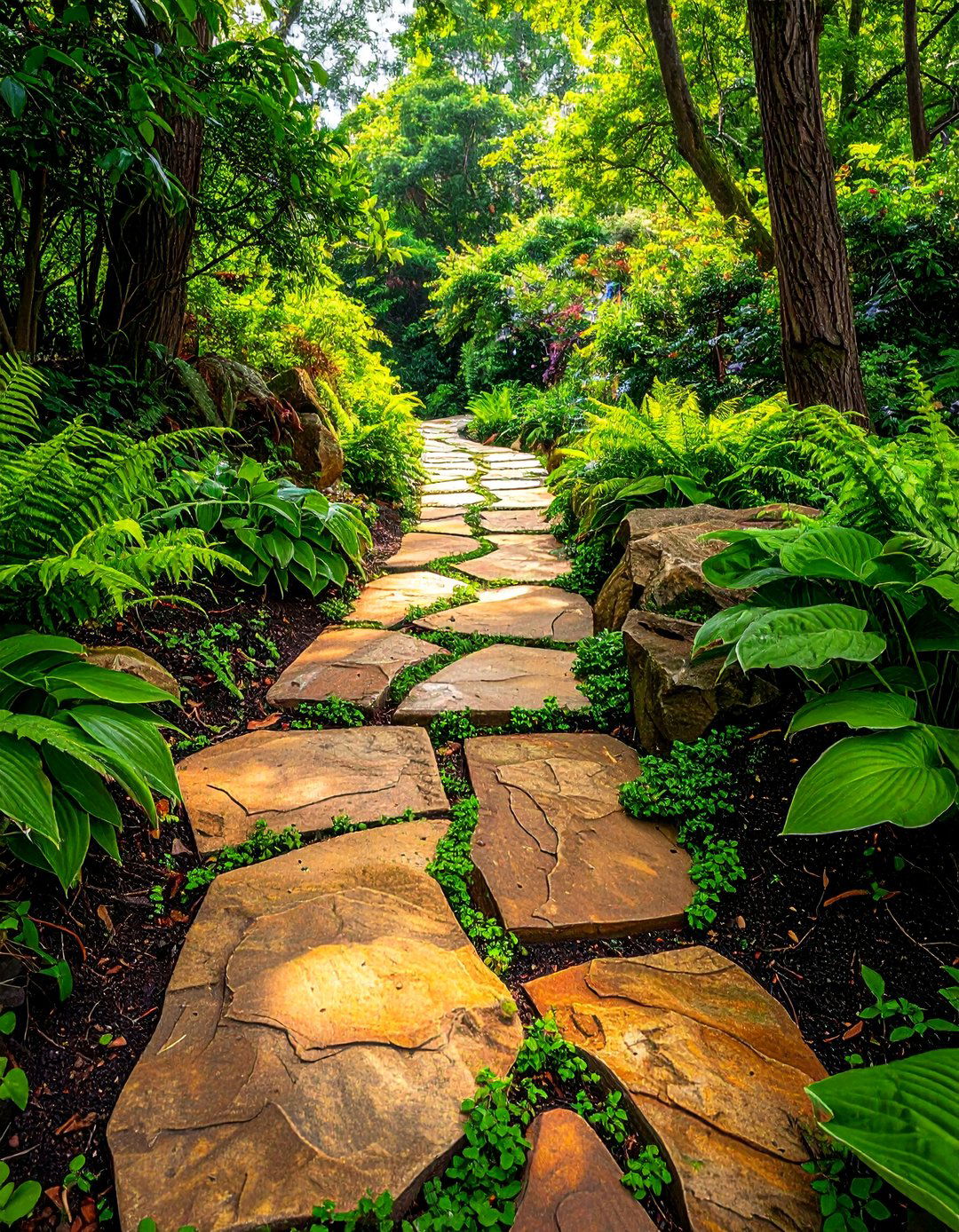
To create a naturalistic, organic feel, an irregular flagstone garden path is an excellent choice. Using large, unevenly shaped pieces of natural stone like slate or sandstone allows for a walkway that appears as if it has always been part of the landscape. The gaps between the stones can be filled with small pebbles, sand, or, for a softer look, low-growing groundcovers such as creeping thyme or moss. This not only adds a touch of green but also helps to stabilize the stones. This style is perfect for leading visitors through a woodland garden or a relaxed, informal backyard setting.
3. Herringbone Brick Garden Path

A herringbone brick garden path introduces a sense of history, structure, and intricate detail to any outdoor space. This classic pattern, with its distinctive V-shape, creates a visually dynamic surface that is both durable and elegant. Using reclaimed or new bricks allows you to customize the color palette, from rich reds and browns to muted tans. The geometric precision of the herringbone layout contrasts beautifully with the soft, organic shapes of surrounding plants. Edging the path with soldier courses—bricks laid standing on end—provides a clean, finished border that contains the pattern and enhances the overall formal aesthetic.
4. Natural Wood Slice Garden Path

Bringing a touch of woodland charm directly into your backyard, a natural wood slice garden path offers a unique and rustic appeal. By setting large, circular cuts from logs into a bed of sand or fine mulch, you can create an enchanting walkway that feels both whimsical and grounded. It is crucial to use rot-resistant wood like cedar or black locust and to treat the slices to prolong their lifespan. The spaces between the wood rounds can be filled with gravel, moss, or wood chips to prevent weed growth and create a cohesive look that blends seamlessly with a natural or forested garden theme.
5. Modern Concrete Paver Garden Path

For a clean, contemporary aesthetic, a modern concrete paver garden path delivers sleek lines and geometric precision. Using large-format square or rectangular pavers laid with tight, uniform spacing creates a minimalist walkway that complements modern architecture and structured garden designs. Planting low, ornamental grasses or filling the gaps with dark-toned decorative gravel can soften the look while maintaining its crisp, clean edges. This style is highly versatile, providing a smooth, stable surface that works equally well for a main entryway path or a chic walkway leading to a modern patio or outdoor seating area.
6. Serpentine Mixed-Material Garden Path
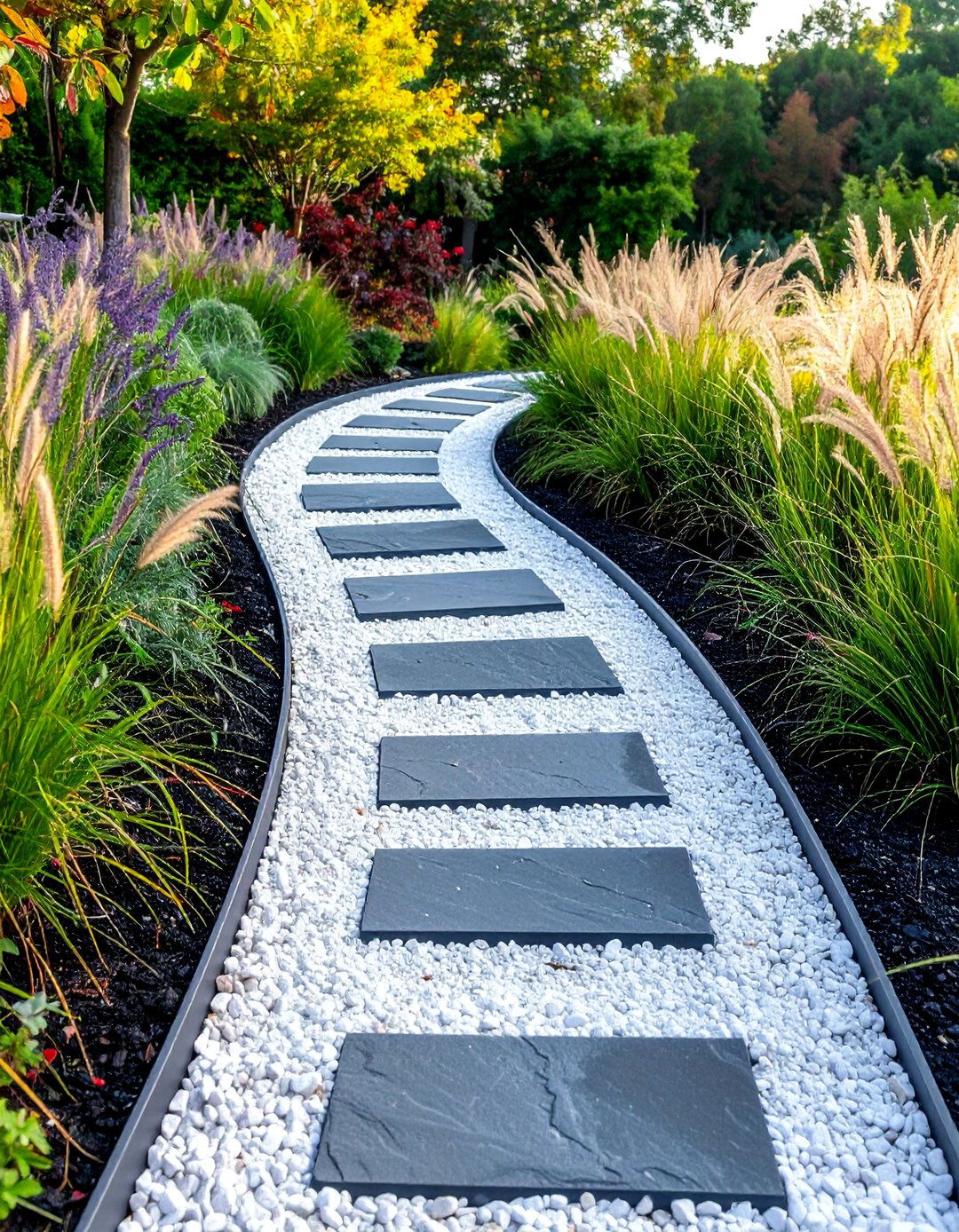
A serpentine mixed-material garden path combines the gentle curves of a meandering walkway with the textural interest of different elements. Imagine a gracefully winding path that transitions from smooth, flat flagstones to sections of crunchy pea gravel, bordered by rustic wooden planks. This approach breaks up visual monotony and adds a layer of creative design to your landscape. The flowing lines encourage a slower, more contemplative journey through the garden, inviting visitors to pause and appreciate different plant groupings along the way. The combination of textures and colors provides endless opportunities for customization to match your personal style and garden theme.
7. Thyme-Planted Stepping Stone Garden Path
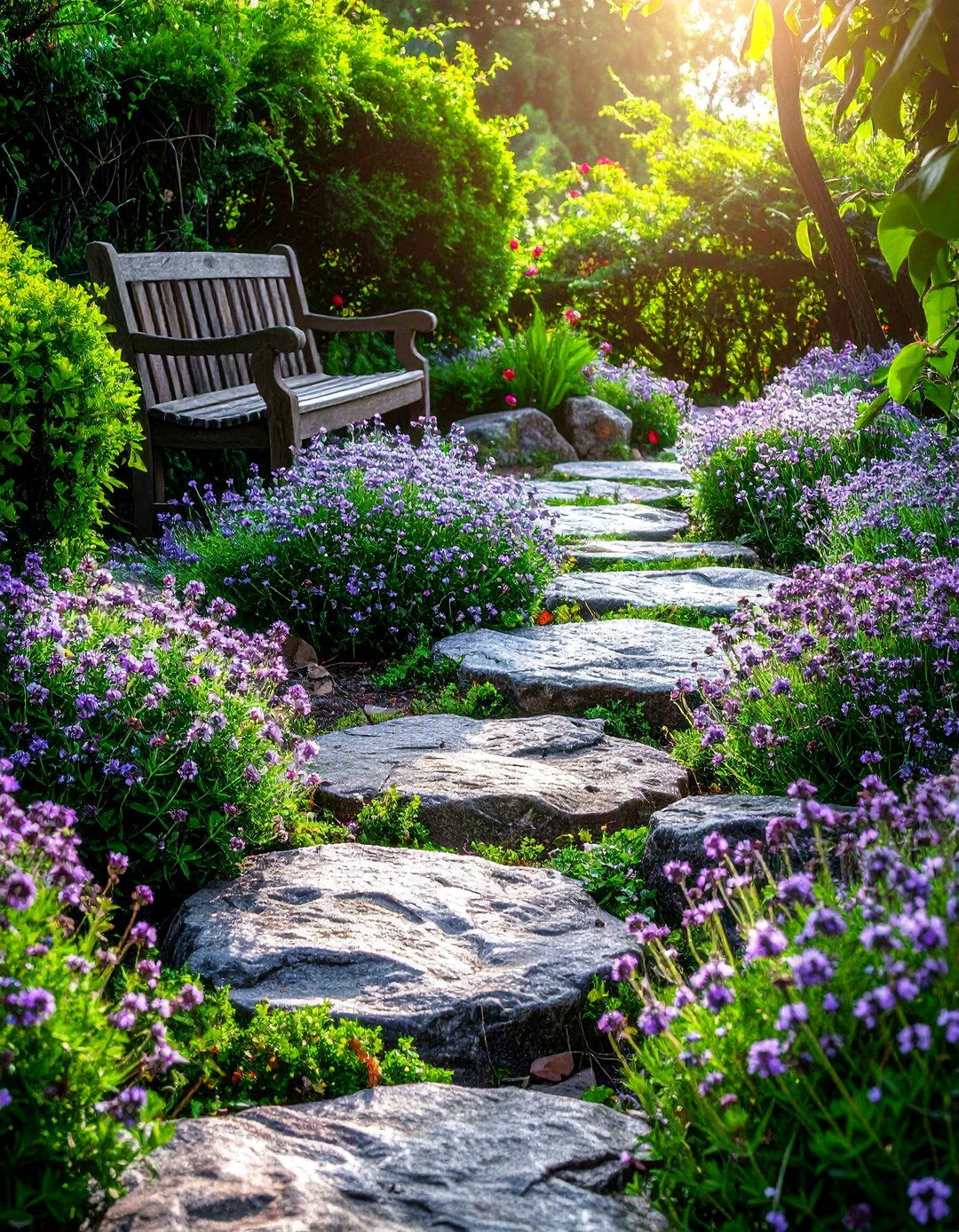
What could be more delightful than a garden path that releases a pleasant fragrance with every step? A thyme-planted stepping stone garden path achieves just that. By strategically placing large, flat stones to create a comfortable walking stride, you can fill the surrounding gaps with resilient, low-growing creeping thyme. This hardy herb can withstand light foot traffic and will release its lovely scent when brushed against. The soft green foliage provides a beautiful, living mortar that contrasts wonderfully with the hard texture of the stones, creating a pathway that is a true sensory experience for sight, touch, and smell.
8. Decomposed Granite Garden Path

A decomposed granite garden path offers a soft, natural, and permeable surface that blends beautifully into a variety of landscapes, particularly those with a Mediterranean or rustic aesthetic. This fine, crushed rock packs down firmly to create a stable yet water-permeable walkway, reducing runoff and supporting a more natural water cycle in your garden. Its warm, golden-tan color provides a neutral backdrop that makes surrounding plant colors pop. For added stability and a clean look, it is often installed with a durable steel or stone edging to keep the material contained and maintain the path’s crisp lines.
9. Reclaimed Railway Sleeper Garden Path

For a bold, rustic, and structurally interesting walkway, a reclaimed railway sleeper garden path makes a powerful statement. These chunky, weathered wooden beams can be laid end-to-end for a linear path or set as wide, intermittent steps through a sloping or terraced garden. The substantial nature of the wood provides a sturdy and durable surface, while its aged patina adds immense character and a sense of history. Surrounding the sleepers with low-maintenance gravel, bark mulch, or a carpet of groundcover helps to integrate them into the landscape and highlights their rugged, industrial-chic appeal.
10. Intricate Mosaic Pebble Garden Path
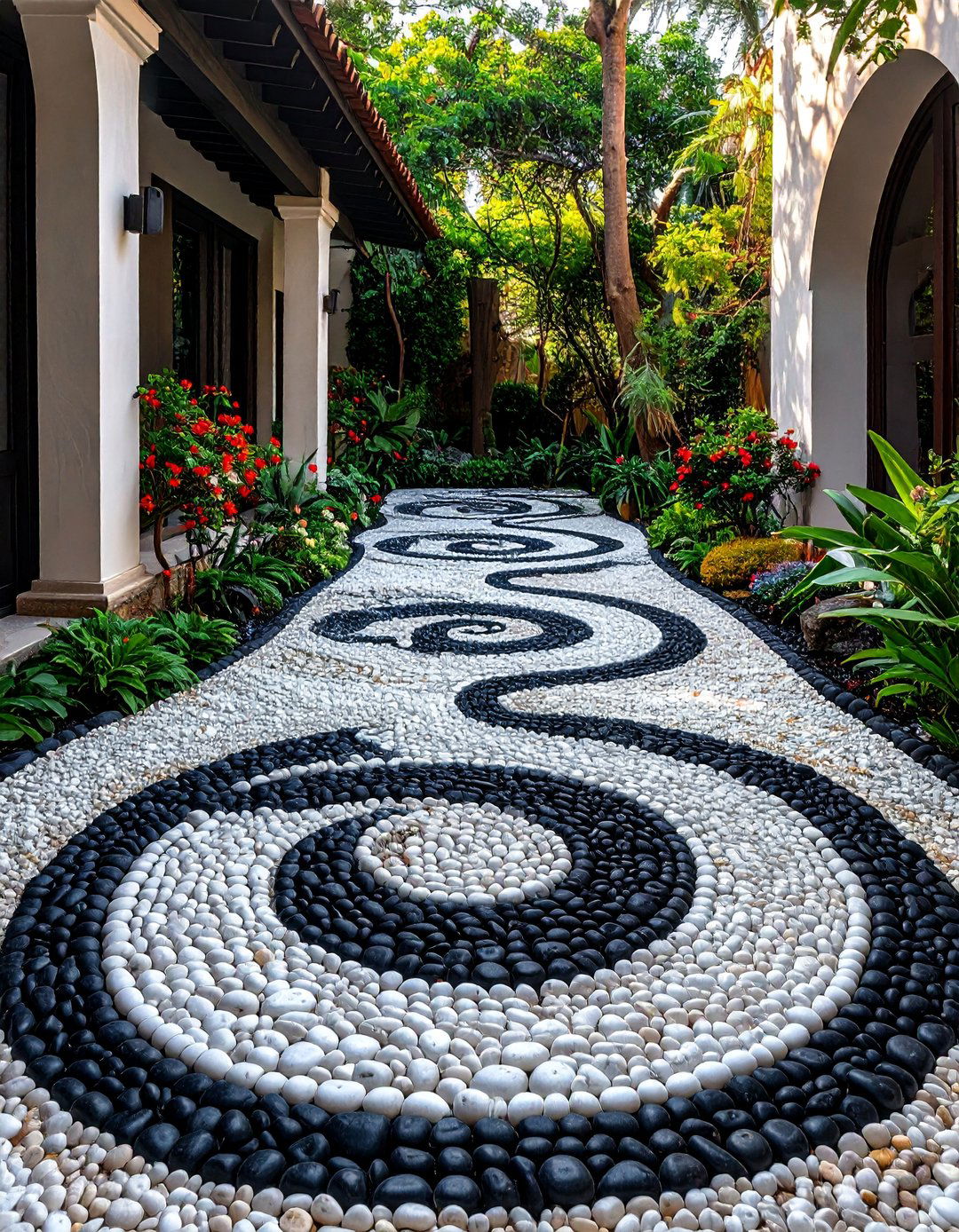
Transform your walkway into a work of art with an intricate mosaic pebble garden path. This ancient technique involves setting small, smooth river stones or pebbles into a wet mortar base to create stunning patterns, from swirling spirals and geometric designs to floral motifs. While it is a labor-intensive process, the result is a truly unique and breathtaking feature that serves as a focal point in any garden. A pebble mosaic path is perfect for a small courtyard, a reflective meditation space, or as a decorative accent within a larger paved area, offering a durable and highly personalized touch.
11. Grass and Square Paver Garden Path
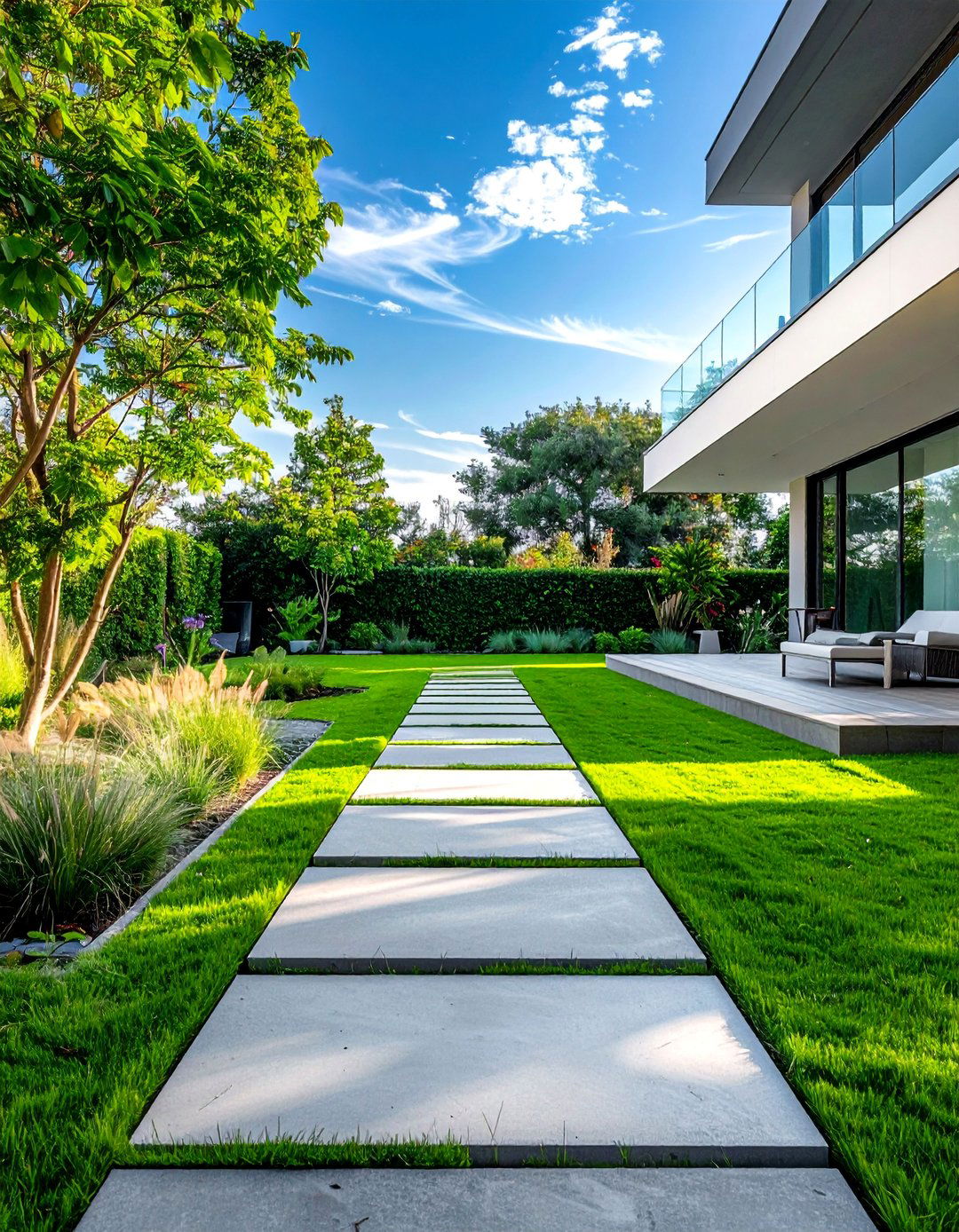
A grass and square paver garden path offers a seamless integration of hardscape and lawn, creating a modern, grid-like pattern that is both functional and visually appealing. By setting large, square concrete or stone pavers into the turf with wide gaps between them, you allow the grass to grow through, softening the overall look. This design provides a solid stepping surface while maintaining the lush, green continuity of the lawn. It's an ideal solution for creating a subtle walkway across a yard to a seating area or garden shed without bisecting the lawn with a solid, imposing path.
12. Raised Wooden Boardwalk Garden Path

To navigate a wet, marshy area or to create a sense of journey and elevation, a raised wooden boardwalk garden path is an elegant and practical solution. Constructed from weather-resistant woods like cedar or composite decking, a boardwalk lifts you above the ground, protecting delicate underplantings and keeping your feet dry. This style of path adds a coastal or Japanese-inspired feel to the garden and can be built straight for a formal look or with curves and platforms to create viewing points. Railings can be added for safety and style, further defining the walkway as a distinct architectural element.
13. Slate Chip Garden Path

For a pathway with a sophisticated, contemporary edge and a unique texture, a slate chip garden path is a superb choice. The flat, dark grey or blue-hued chips of slate create a modern, monochromatic look that contrasts dramatically with vibrant green foliage. Unlike rounder gravels, the interlocking nature of the flat chips provides a more stable walking surface that stays in place. The darker color also absorbs heat, which can be beneficial for nearby plants in cooler climates. This material is an excellent, low-maintenance option for creating clean, defined walkways in modern or minimalist garden designs.
14. Solar-Lit Edged Garden Path
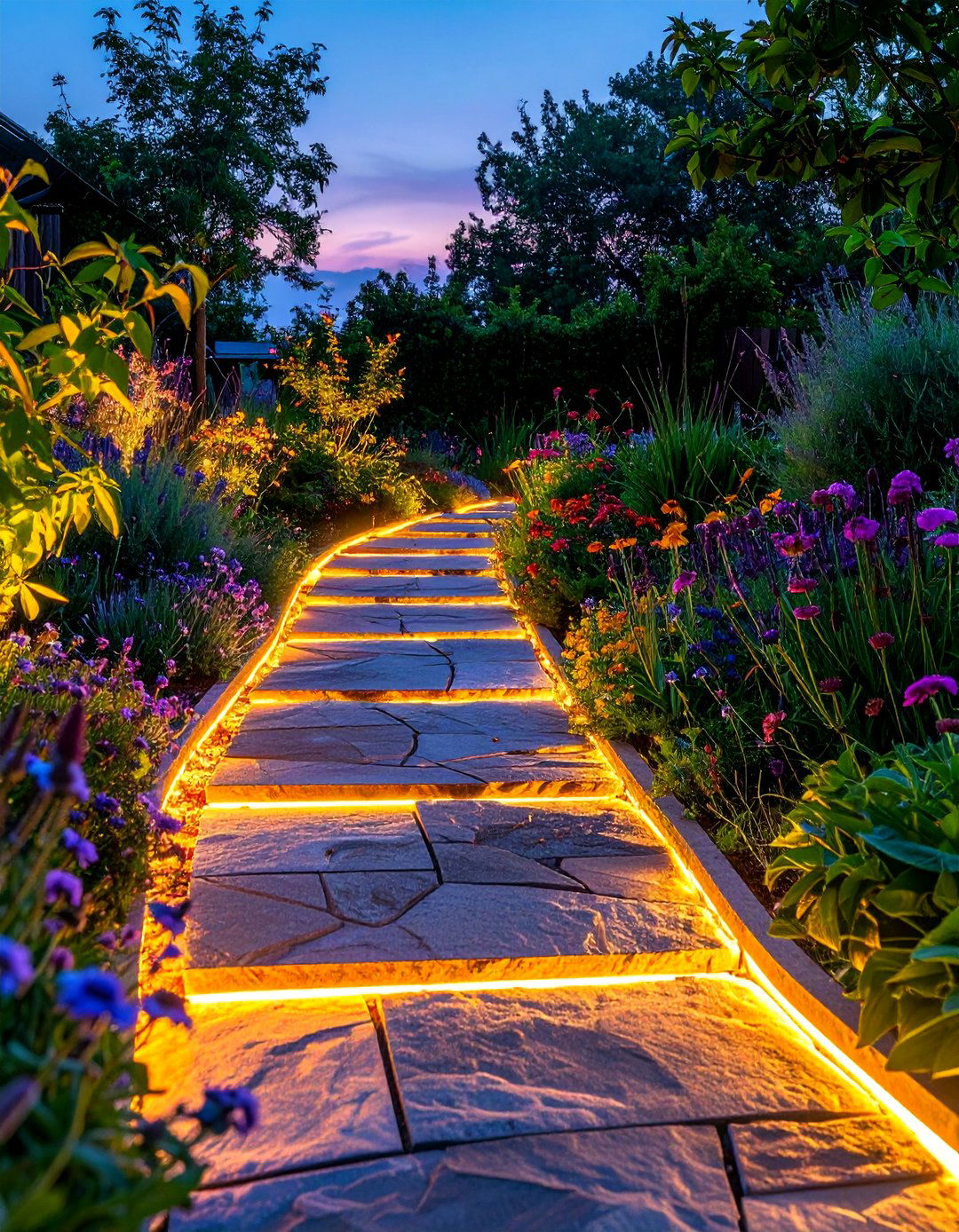
Enhance the beauty and functionality of your walkway after dark with a solar-lit edged garden path. By integrating low-profile solar-powered lights directly into the path's edging or placing them along the border, you can create a gentle, ambient glow that guides the way safely. This not only adds a magical atmosphere to your evening garden but also highlights the shape and curves of the path and surrounding flowerbeds. There are numerous styles available, from sleek, modern stake lights to discreet in-ground units, allowing you to match the lighting to your garden's overall aesthetic without the need for complex wiring.
15. Edible Herb Spiral Garden Path
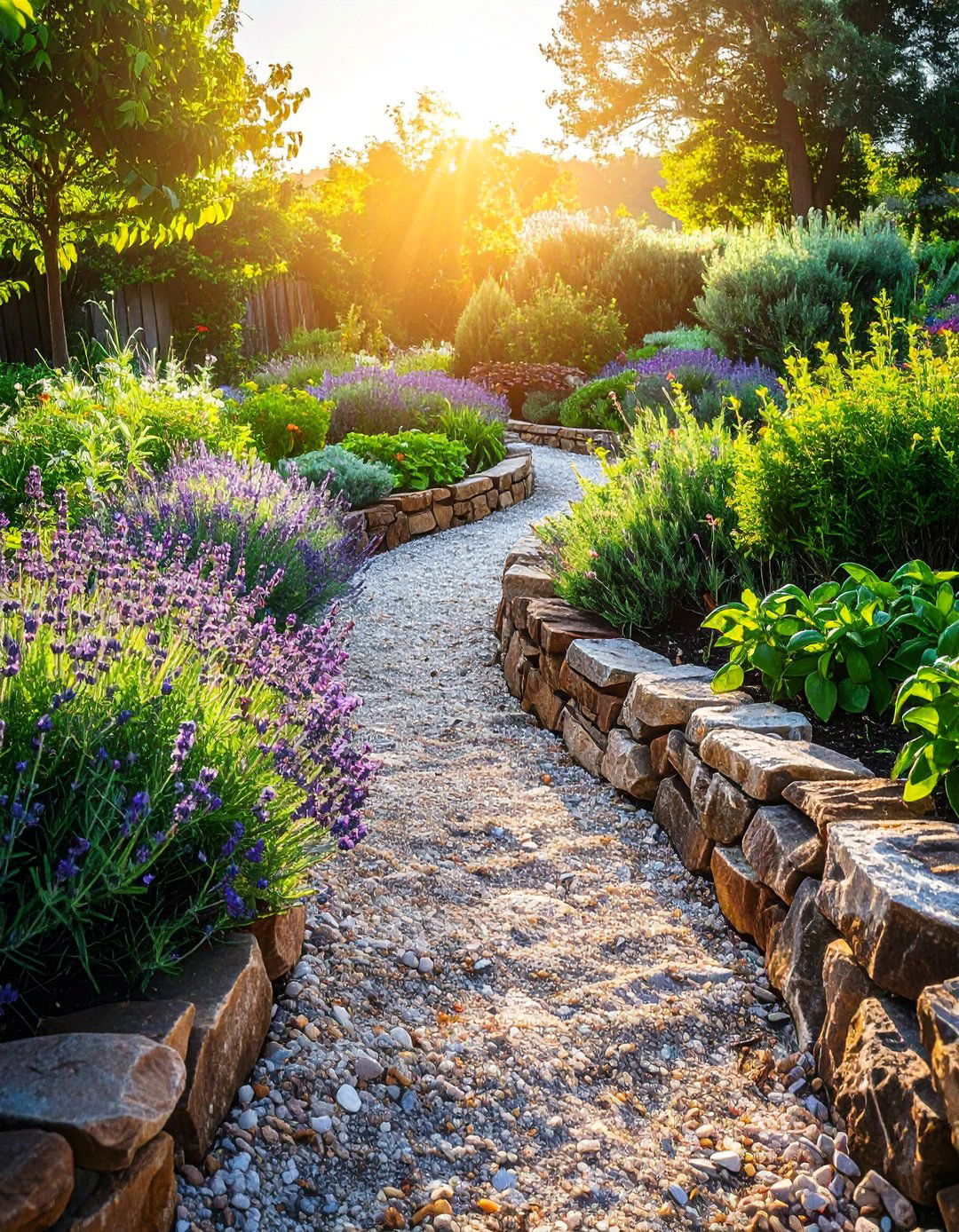
Combine form and function by designing an edible herb spiral garden path. This design involves creating a spiraling, slightly raised bed that you can walk into, with the path itself leading you past a variety of culinary herbs. The path can be made of simple materials like gravel or mulch, while the raised spiral structure, often built from stone or brick, creates different microclimates suitable for a wide range of herbs. This permaculture-inspired design is not only a beautiful, living sculpture but also provides easy access for harvesting fresh ingredients for your kitchen, making your garden walkway a productive and aromatic experience.
16. Recycled Rubber Paver Garden Path

For an eco-friendly, safe, and comfortable option, a recycled rubber paver garden path is an innovative choice. Made from recycled tires, these pavers are incredibly durable, weather-resistant, and provide a non-slip, cushioned surface that is easy on the joints. They are available in various shapes, sizes, and colors, often mimicking the look of traditional brick or stone. Installation is simple, as they can be laid directly on a prepared surface of sand or gravel. This sustainable choice is perfect for family-friendly gardens, play areas, or anywhere a soft, resilient pathway is desired.
17. Dry Creek Bed Garden Path
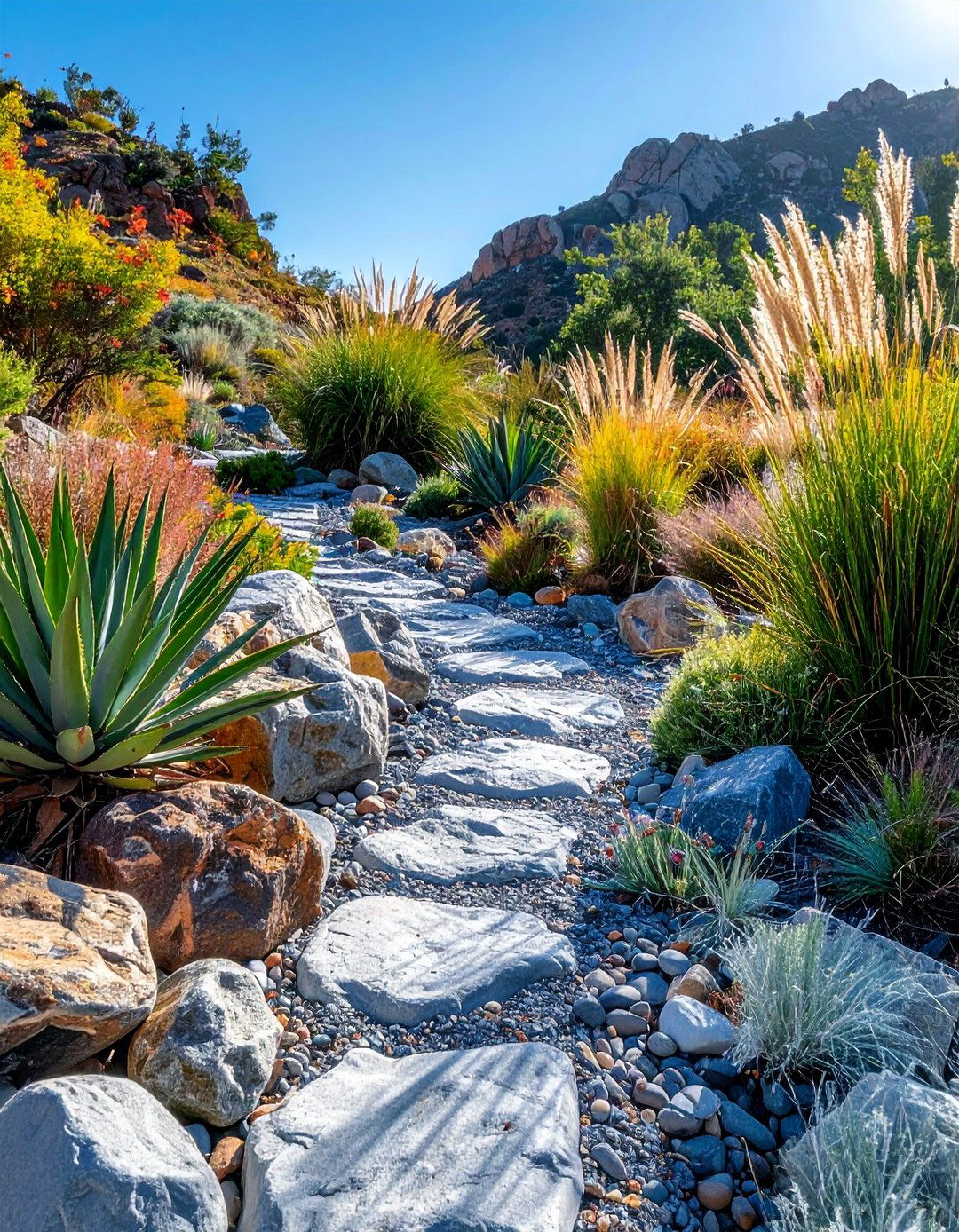
A dry creek bed garden path serves a dual purpose as both a stunning visual feature and a functional drainage solution. By arranging a variety of river rocks, pebbles, and small boulders to mimic the appearance of a natural, dried-up stream, you create a rustic and dynamic walkway. The path can meander through the garden, guiding stormwater away from your home's foundation during heavy rains. Planting drought-tolerant grasses and perennials along the "banks" of the creek bed enhances the naturalistic illusion, making it a beautiful and practical addition to any landscape, especially in regions prone to downpours.
18. Polished River Rock Edged Garden Path
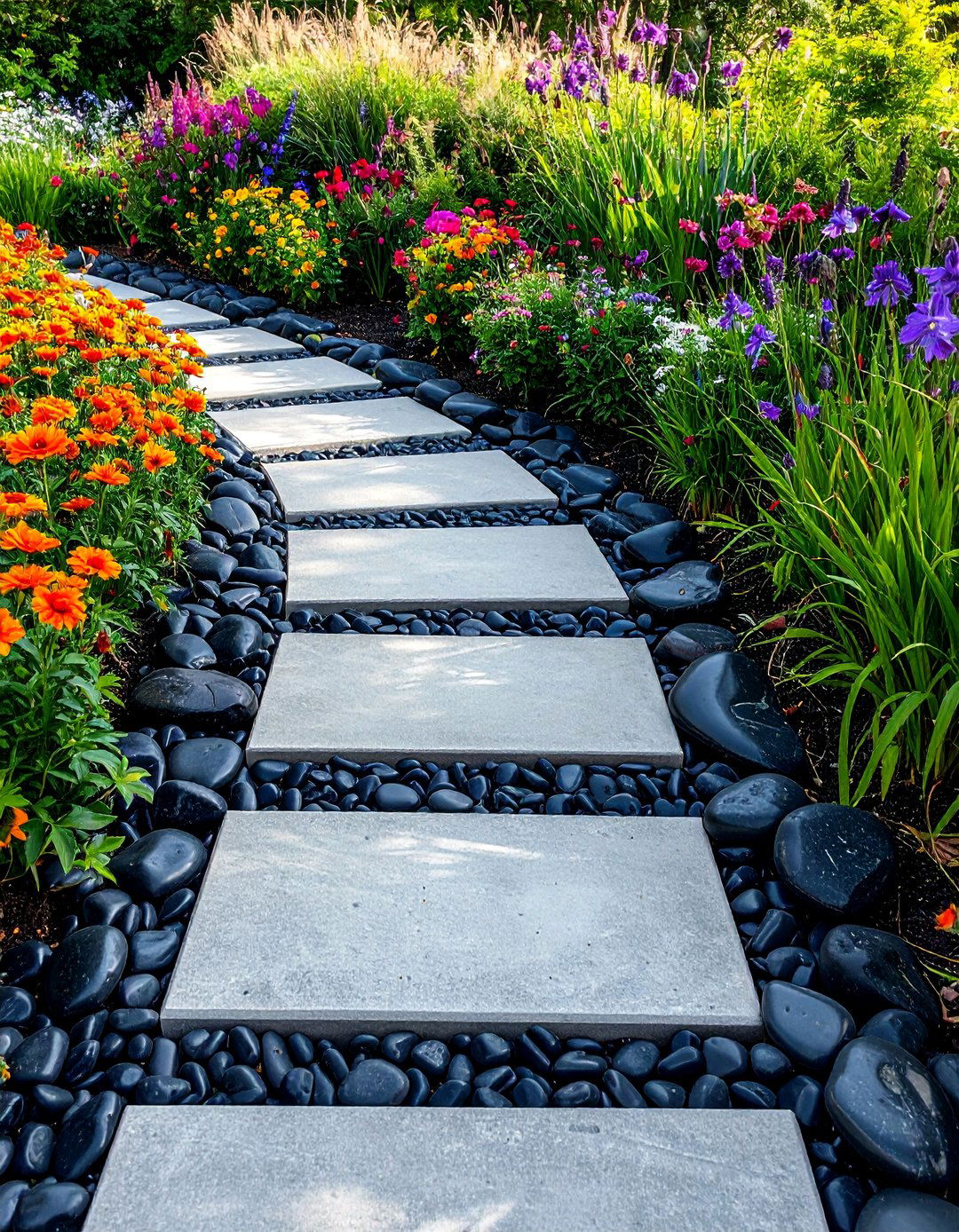
To add a touch of refined, natural elegance to any walkway, consider a polished river rock edged garden path. Using smooth, glossy stones in various shades of grey, black, or tan as a border creates a distinct and sophisticated separation between the path and adjacent garden beds. The polished finish of the rocks catches the light and provides a beautiful textural contrast against path materials like concrete, gravel, or mulch. This decorative edging is simple to install but has a high-impact effect, elevating a simple path into a deliberately designed feature that looks clean, tidy, and professionally landscaped.
19. Stamped Concrete Garden Path
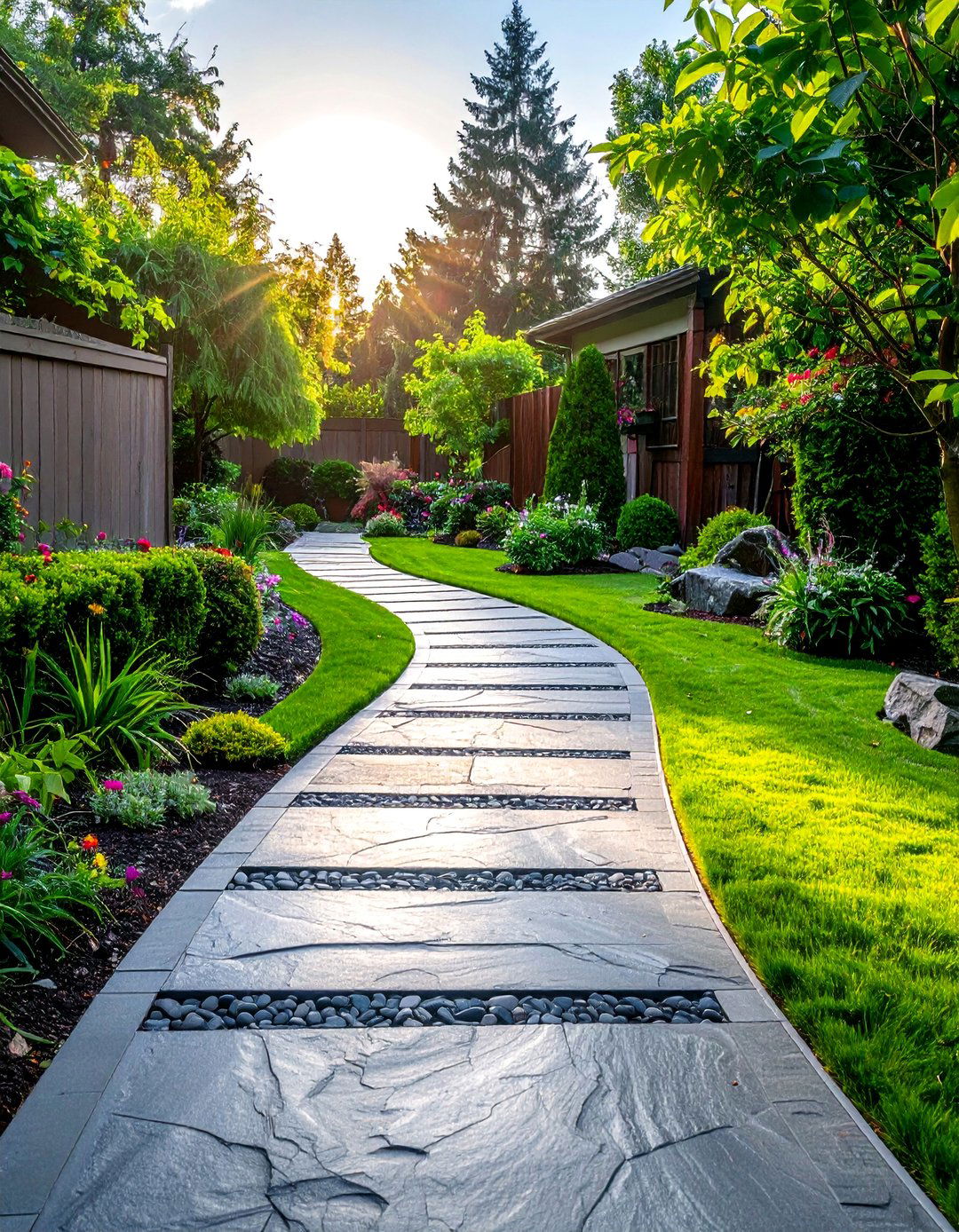
If you desire the look of expensive materials like slate, flagstone, or brick without the high cost and intensive labor, a stamped concrete garden path is an excellent alternative. This technique involves pouring a concrete slab and then pressing molds or "stamps" into the wet surface to create realistic textures and patterns. Color can also be added to the concrete mix or applied to the surface to mimic the hues of natural stone. The result is a highly durable, low-maintenance, and continuous surface that offers the aesthetic appeal of high-end materials in a more affordable and customizable package.
20. Seashell Garden Path
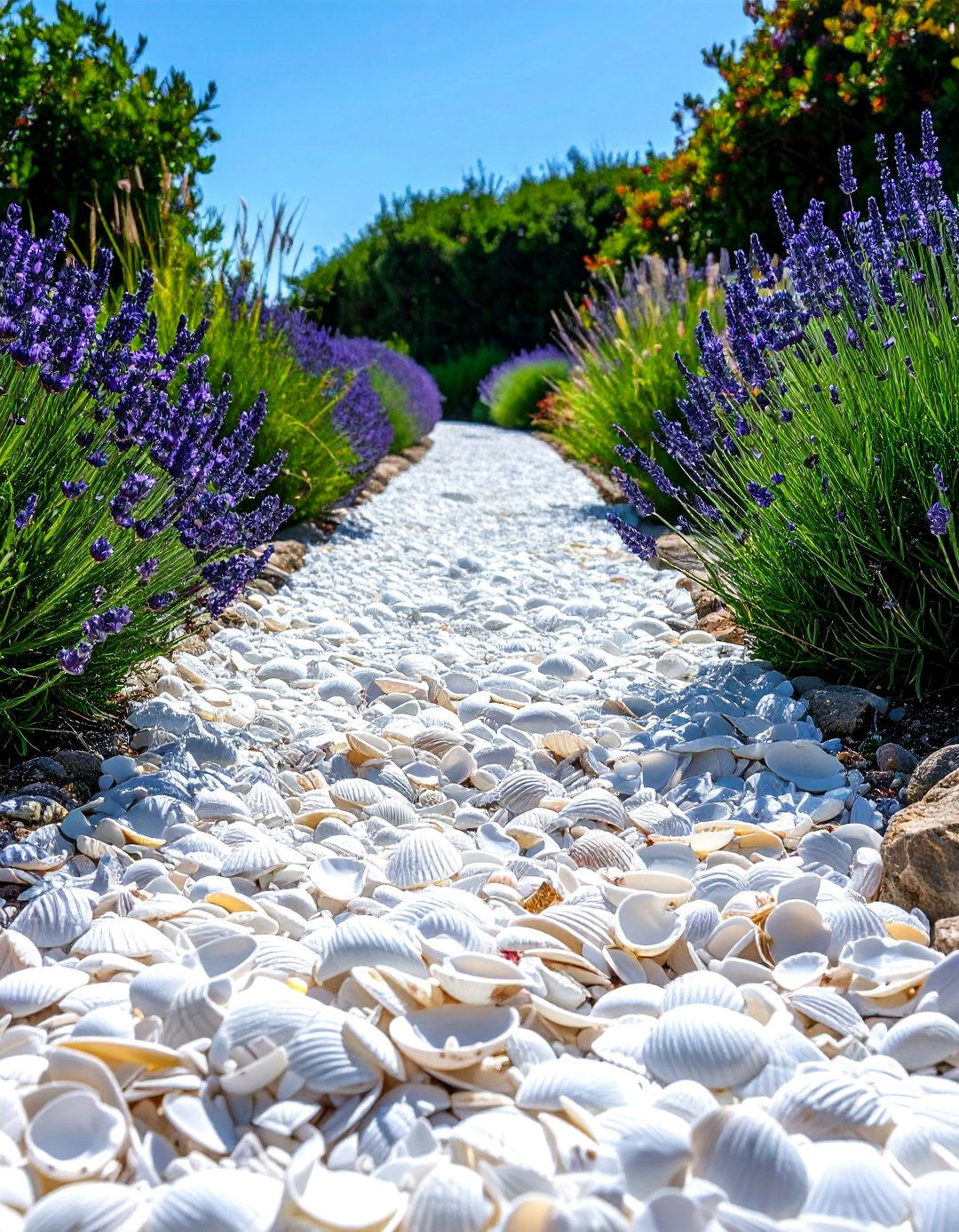
For a coastal or beach-themed garden, a seashell garden path provides a bright, unique, and sustainable option. Using crushed shells, such as oyster or clam shells, creates a light-colored walkway that reflects sunlight and brightens up shady areas. Over time, the shells break down, adding valuable calcium and nutrients to the surrounding soil. The satisfying crunch underfoot and the subtle seaside aroma add to the coastal charm. This eco-friendly material is a wonderful way to bring a piece of the shore to your backyard, creating a casual and inviting path that evokes memories of the ocean.
21. Formal Symmetrical Garden Path

A formal symmetrical garden path is the cornerstone of classic garden design, creating a sense of order, balance, and grandeur. Typically characterized by a long, straight central axis, this path is often made from precisely laid materials like cut stone, brick, or fine gravel. It is flanked by identical, mirrored plantings on either side, such as clipped boxwood hedges, formal flower beds, or rows of standard roses. This design leads the eye directly to a focal point, such as a fountain, statue, or elegant bench, establishing a powerful and timeless aesthetic rooted in tradition and geometric precision.
22. Wildflower Bordered Garden Path

Create a charming, cottage-style feel with a wildflower bordered garden path. This idea focuses less on the path material itself—which can be as simple as mulch or beaten earth—and more on the abundant, informal plantings that spill over its edges. A colorful mix of native wildflowers, perennials, and self-seeding annuals like poppies, cosmos, and cornflowers creates a soft, romantic, and ever-changing border. This approach celebrates nature's unpredictability and abundance, resulting in a relaxed and enchanting walkway that attracts pollinators and provides a beautiful, meadow-like experience as you stroll through your garden.
23. Japanese Zen Garden Path

A Japanese Zen garden path is designed to inspire tranquility, contemplation, and a connection with nature. Often called a "roji," this type of path is deliberately simple and rustic. It typically features carefully placed, asymmetrical stepping stones set amidst a bed of raked gravel or moss. The path often follows an indirect route, encouraging a slower pace and mindful movement through the space. Natural elements like bamboo, stone lanterns, and strategically pruned maples complete the serene atmosphere. The goal is not just to get from one place to another, but to experience a peaceful journey and appreciate the beauty of subtlety.
24. Labyrinth Meditation Garden Path

For a truly unique and interactive garden feature, a labyrinth meditation garden path offers a space for mindfulness and reflection. Unlike a maze, a labyrinth has a single, non-branching path that leads to the center and back out again. The pattern can be created with a variety of materials, from simple lines mown into a lawn to intricate designs laid out with bricks or stones. Walking the labyrinth is a form of moving meditation, intended to quiet the mind and reduce stress. It transforms a simple walk into a purposeful, calming ritual, making your garden a true sanctuary for mental well-being.
25. Illuminated Glass Pebble Garden Path

Bring a touch of magic to your garden at night with an illuminated glass pebble garden path. These special pebbles are made from recycled glass and a photoluminescent material that allows them to absorb sunlight during the day and emit a gentle, otherworldly glow after dark. By mixing these pebbles into the surface of a gravel or concrete path, or by using them as a decorative border, you can create a starry, twinkling walkway without any need for electricity or wiring. The subtle, ethereal light provides a safe and enchanting guide through your garden long after the sun has set.
26. Sloped Terraced Garden Path
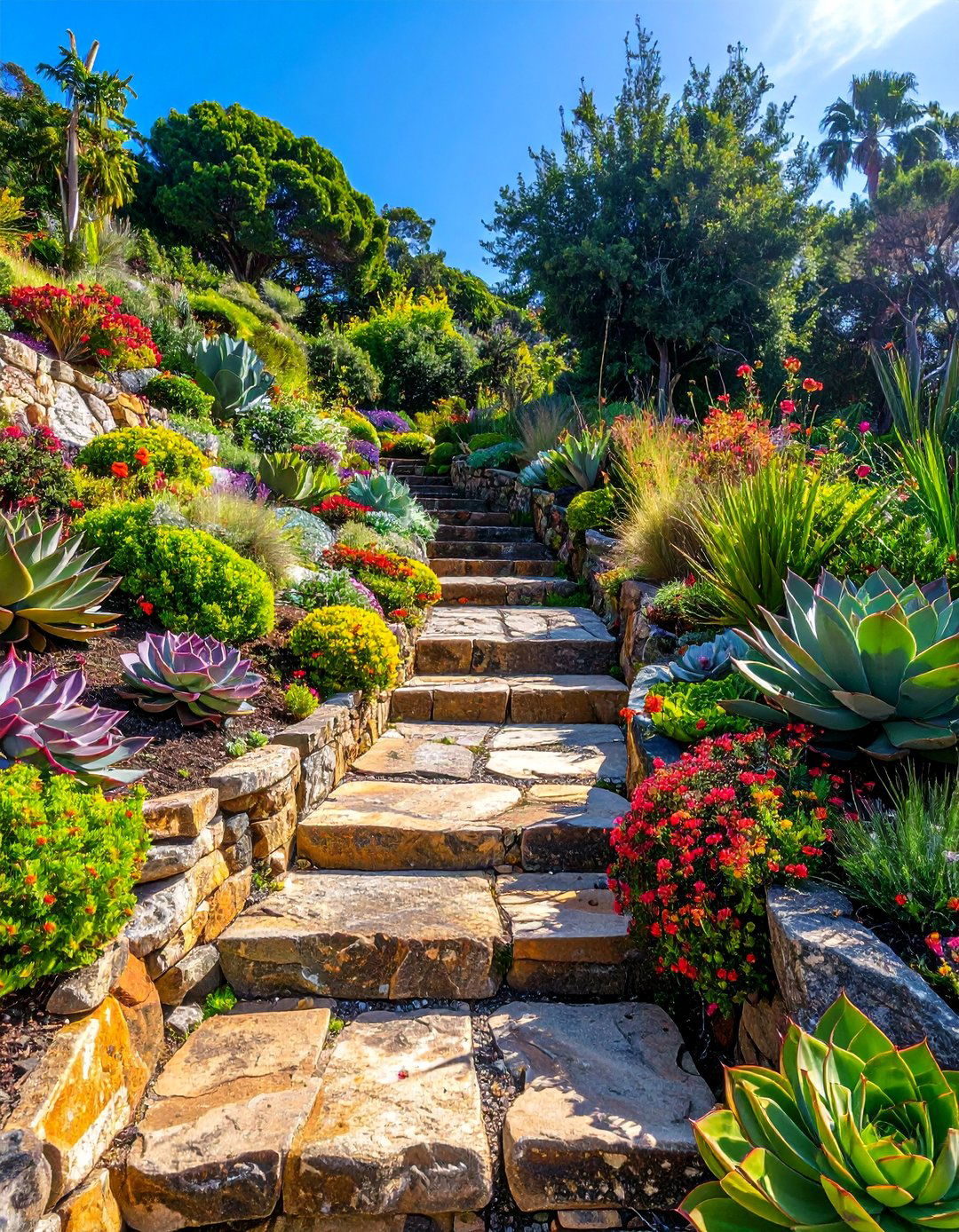
Navigating a sloped yard can be challenging, but a sloped terraced garden path turns the incline into a stunning design feature. By incorporating wide, shallow steps made from materials like railway sleepers, stone blocks, or concrete, you can create a comfortable and safe descent. The flat areas of the terraces on either side of the steps provide perfect planting pockets for cascading flowers, succulents, or ornamental grasses. This design not only solves the practical issue of a steep grade but also adds architectural interest and dimension, transforming a difficult hillside into a series of beautiful, accessible garden levels.
27. End-Grain Wood Block Garden Path
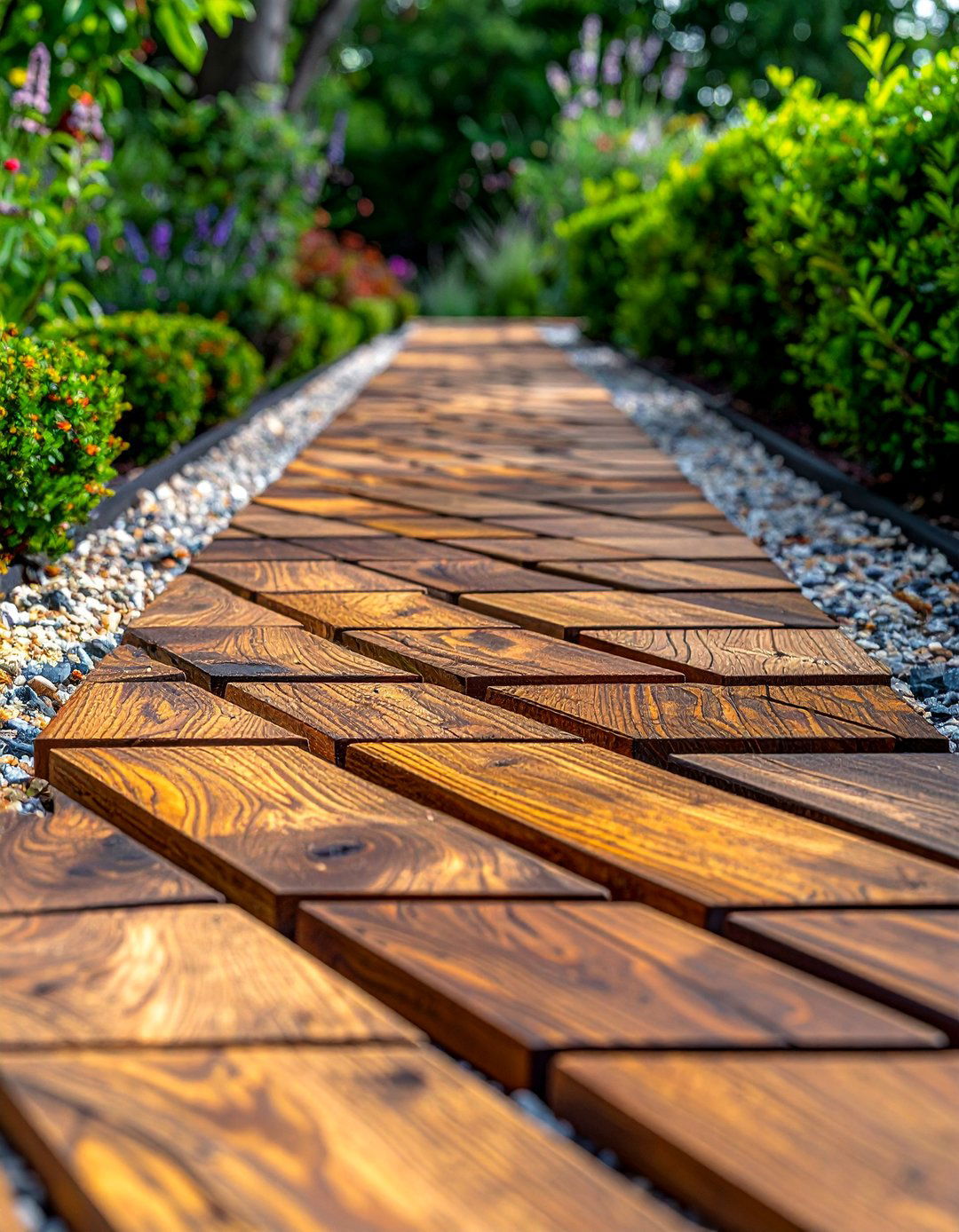
An end-grain wood block garden path offers a durable and visually striking alternative to traditional wood slice paths. Instead of using round log slices, this method utilizes rectangular blocks of wood, often reclaimed from old beams or posts, set with their tough end-grain facing up. These blocks can be arranged in various patterns, such as a running bond or basketweave, similar to brickwork. When set tightly together on a bed of sand, they create a solid, textured surface with a warm, rustic charm. Using naturally rot-resistant wood ensures a long-lasting and unique walkway with rich color and character.
28. Winding Mulch Garden Path
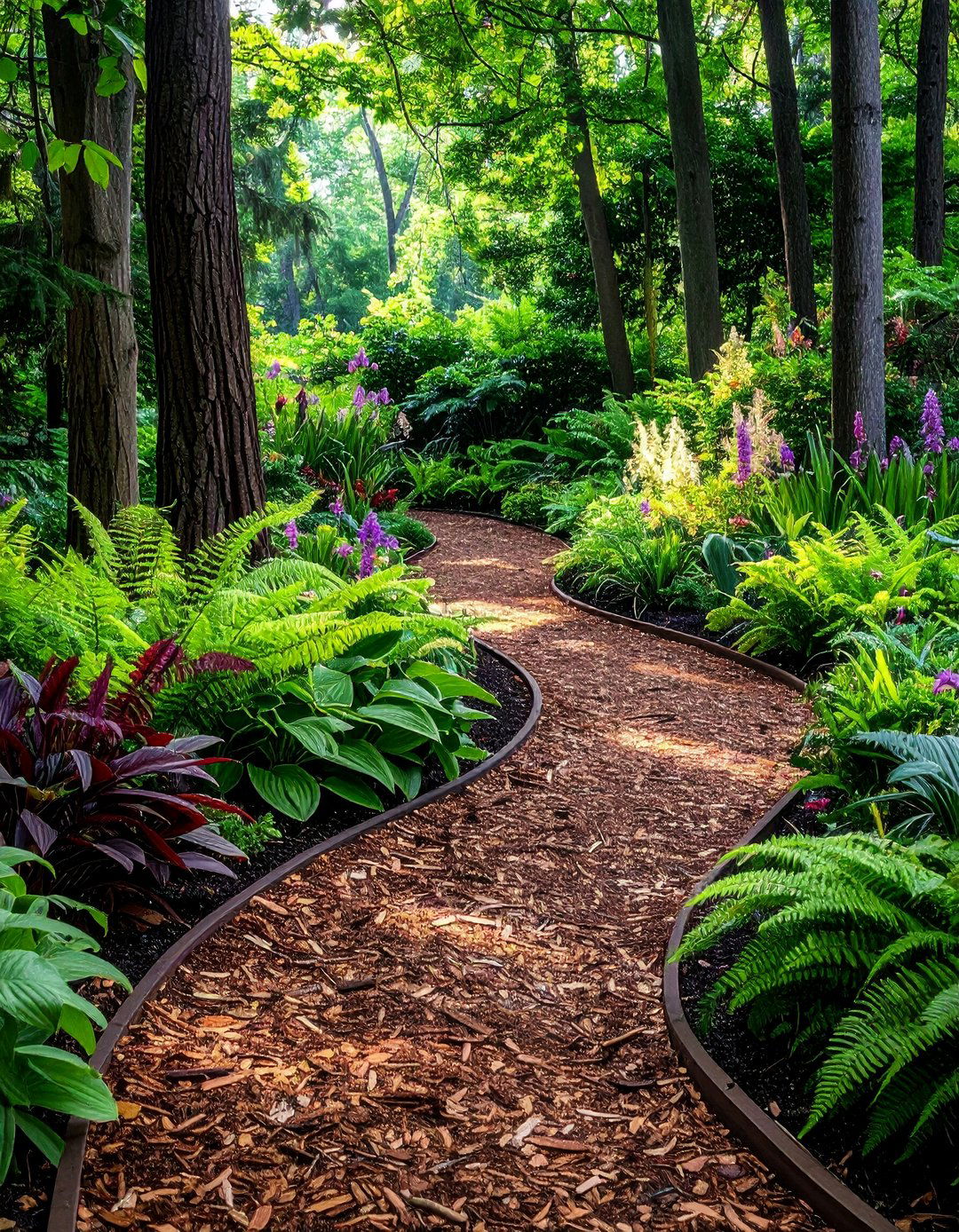
For an informal, woodland, or shade garden, a winding mulch garden path is a simple, inexpensive, and eco-friendly solution. A thick layer of organic mulch, such as wood chips, cedar bark, or pine straw, creates a soft, quiet walking surface that blends seamlessly into a natural setting. The path can meander gracefully around trees and through planting beds, encouraging a relaxed exploration of the garden. Mulch paths also help suppress weeds, retain soil moisture, and gradually decompose to enrich the soil. They are easy to install and can be refreshed with a new layer of mulch each season.
29. Log and Gravel Garden Path

Combine the rustic charm of wood with the practicality of gravel in a log and gravel garden path. This design uses logs or thick wooden planks laid on their sides to create a sturdy and attractive border for a gravel walkway. The wood edging helps to contain the gravel, preventing it from spilling into adjacent garden beds, while adding a natural, textural element. The contrast between the warm, organic wood and the cool, crunchy stone creates a visually appealing path that works well in cottage, rustic, or country-style gardens. It's a functional and aesthetically pleasing way to define your garden's walkways.
30. Black Slate Paver Garden Path
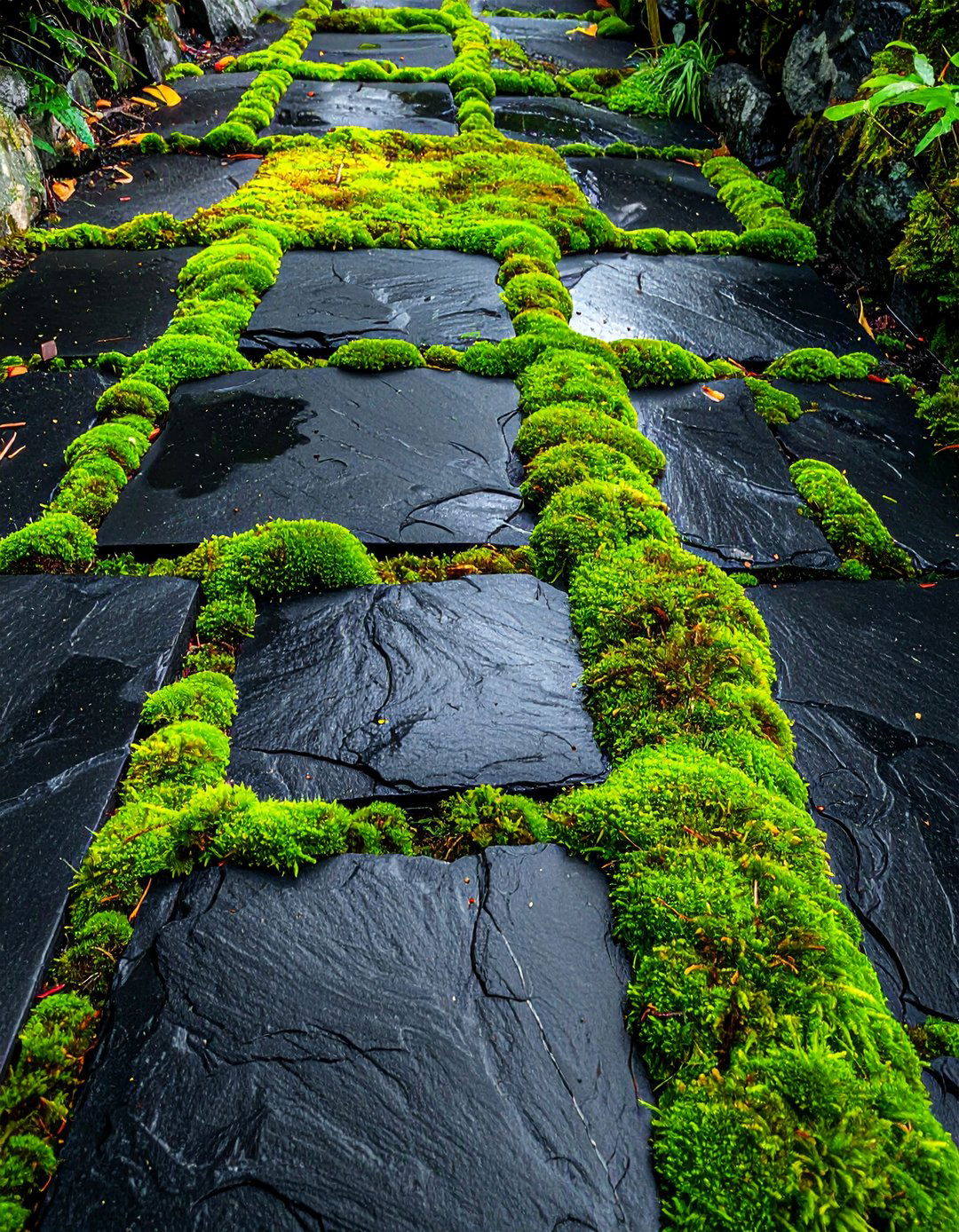
For a dramatic, high-contrast, and sophisticated look, a black slate paver garden path makes a bold statement. The deep, rich color of the natural slate creates a stunning backdrop that makes surrounding green foliage and colorful blooms appear more vibrant. Whether you choose large-format square pavers for a contemporary feel or smaller, irregular shapes for a more traditional look, the dark surface adds a sense of elegance and modernity. Black slate is particularly effective when contrasted with light-colored gravel or bright green groundcover planted in the gaps, creating a striking and memorable design element in the landscape.
Conclusion:
Ultimately, the perfect garden path is one that enhances both the function and beauty of your outdoor space. From the rustic appeal of wood slices and mulch to the timeless elegance of brick and flagstone, the options are vast. By considering your home’s style, your garden's theme, and the practical needs of your landscape, you can create a walkway that is more than just a route. It can become a defining feature that invites exploration, adds visual interest, and ties the entire garden together into a cohesive and enchanting sanctuary for you to enjoy.

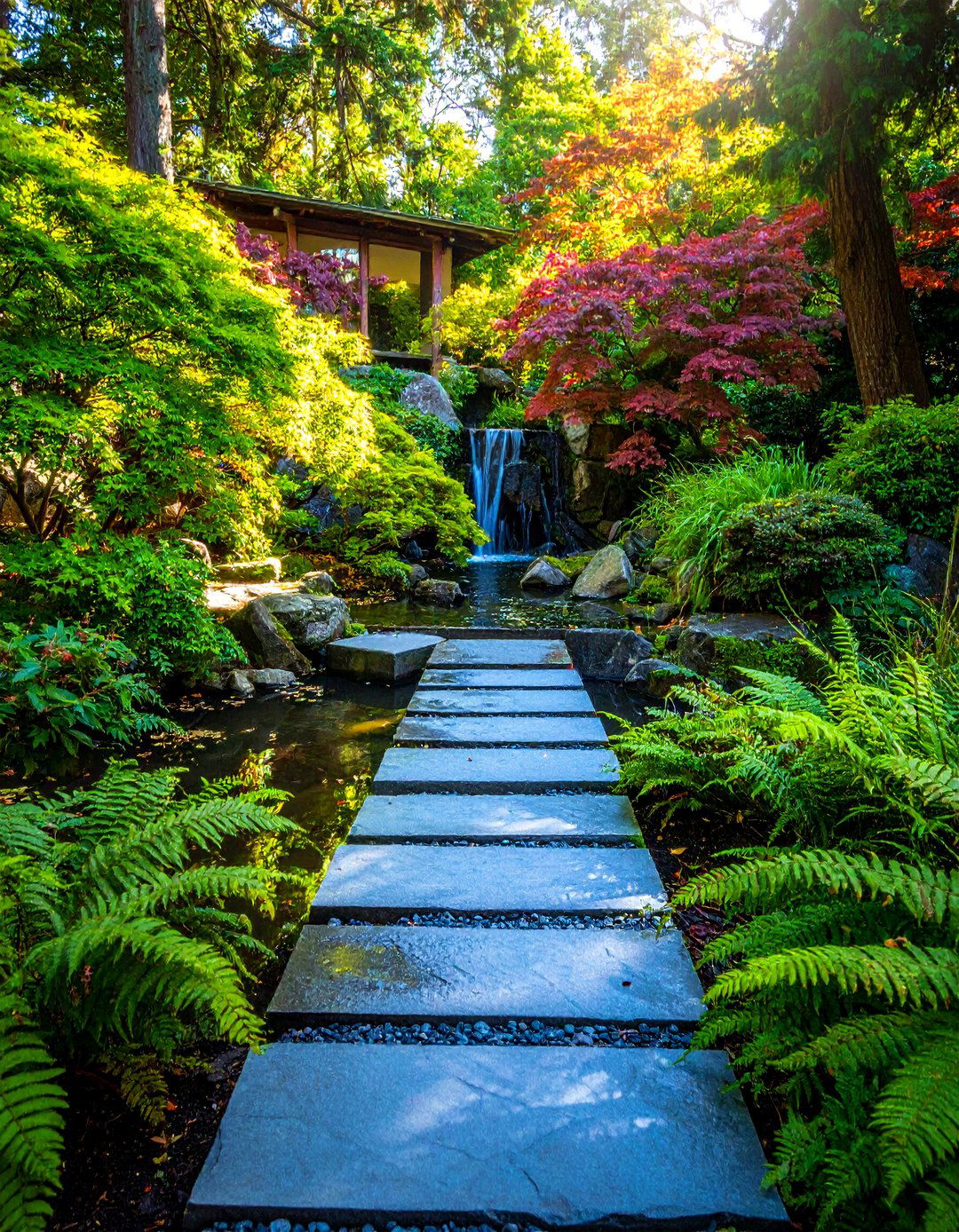
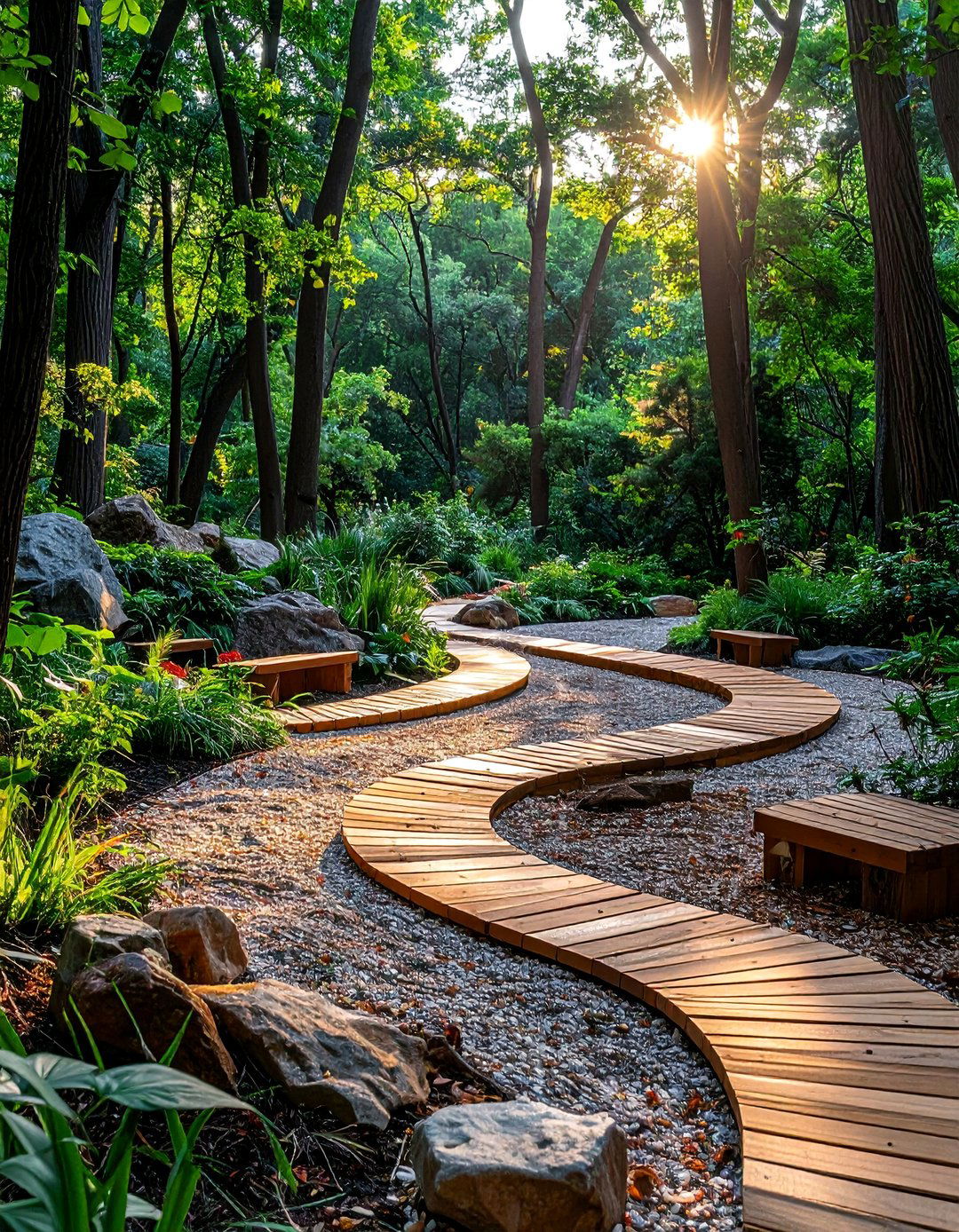


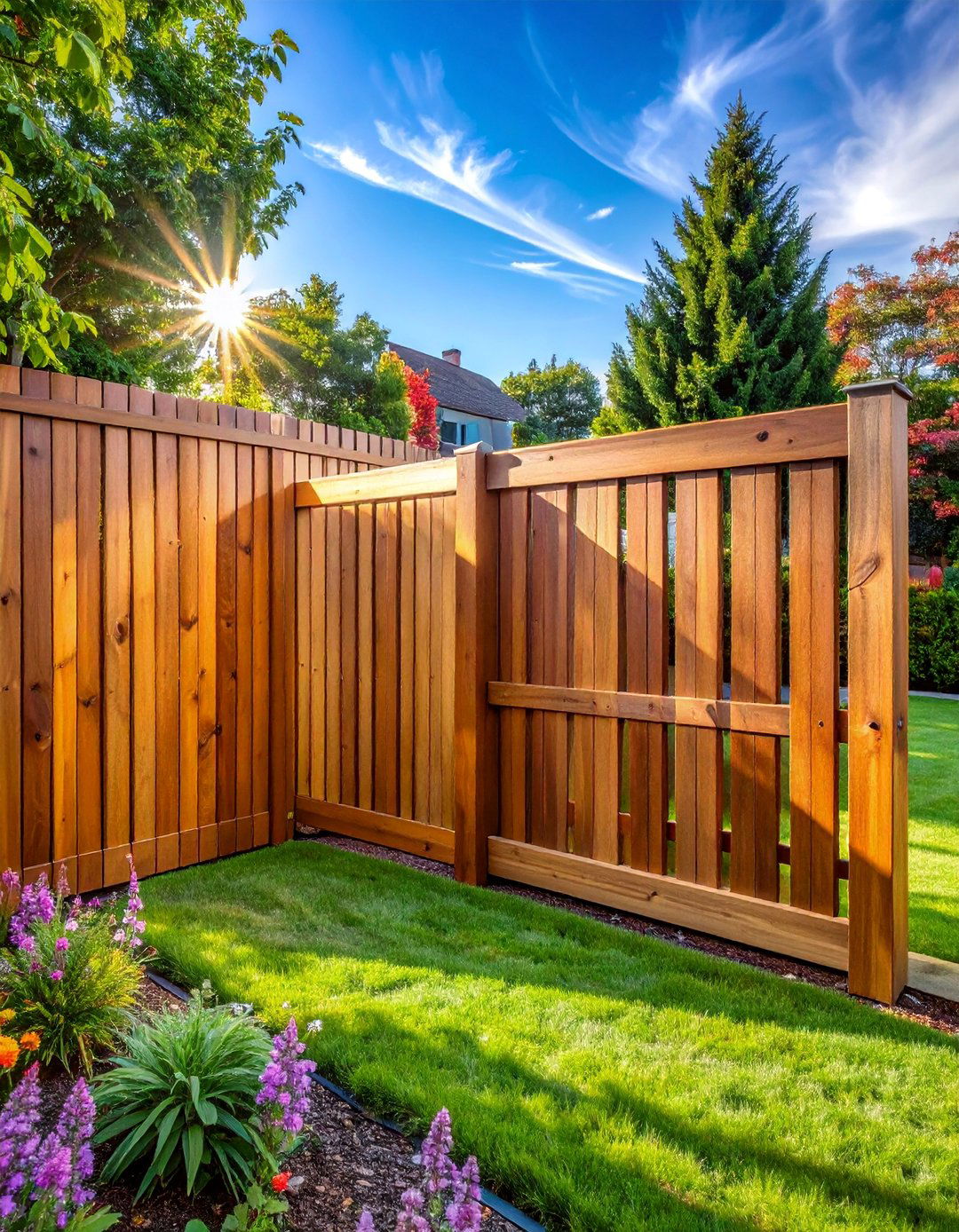

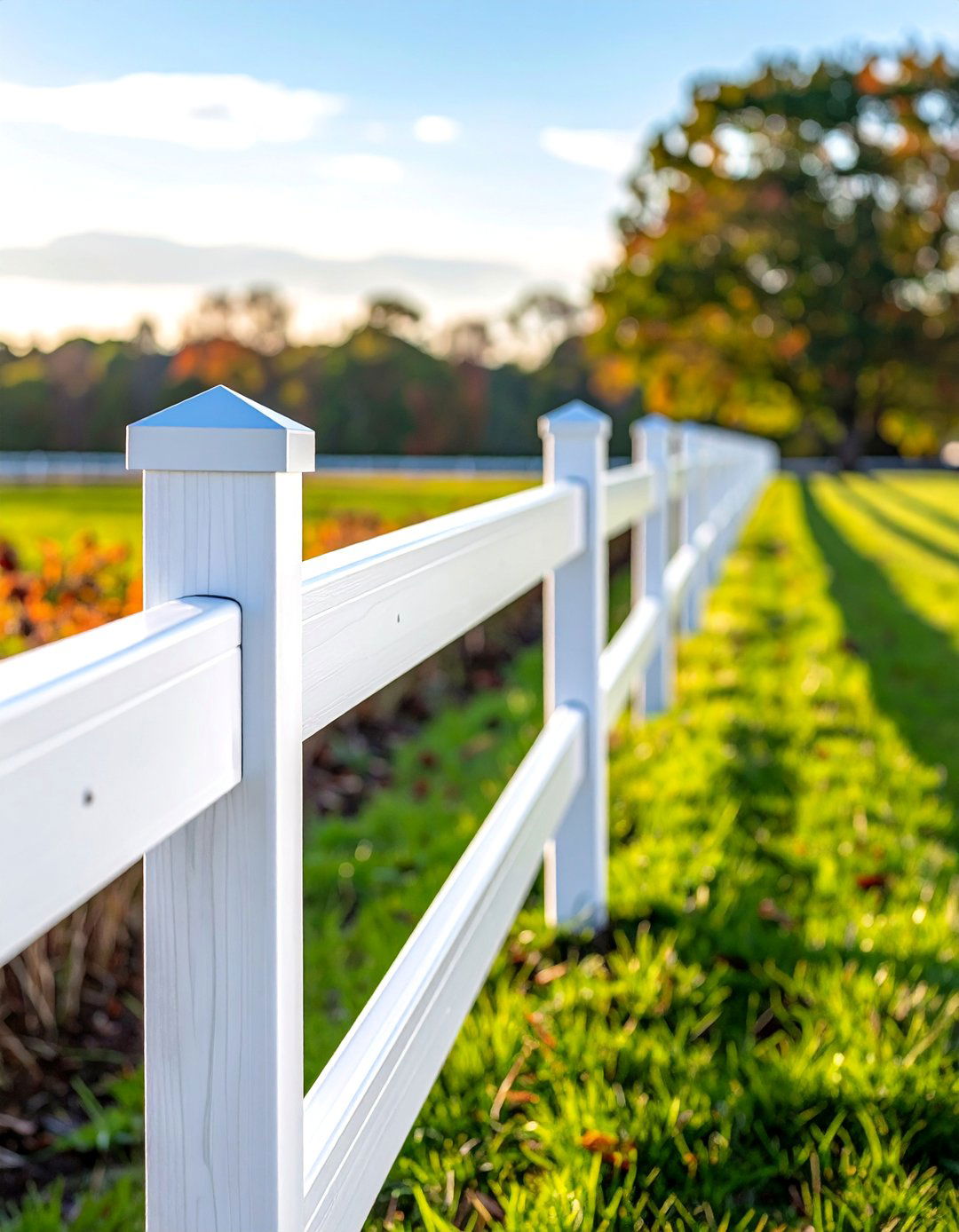

Leave a Reply